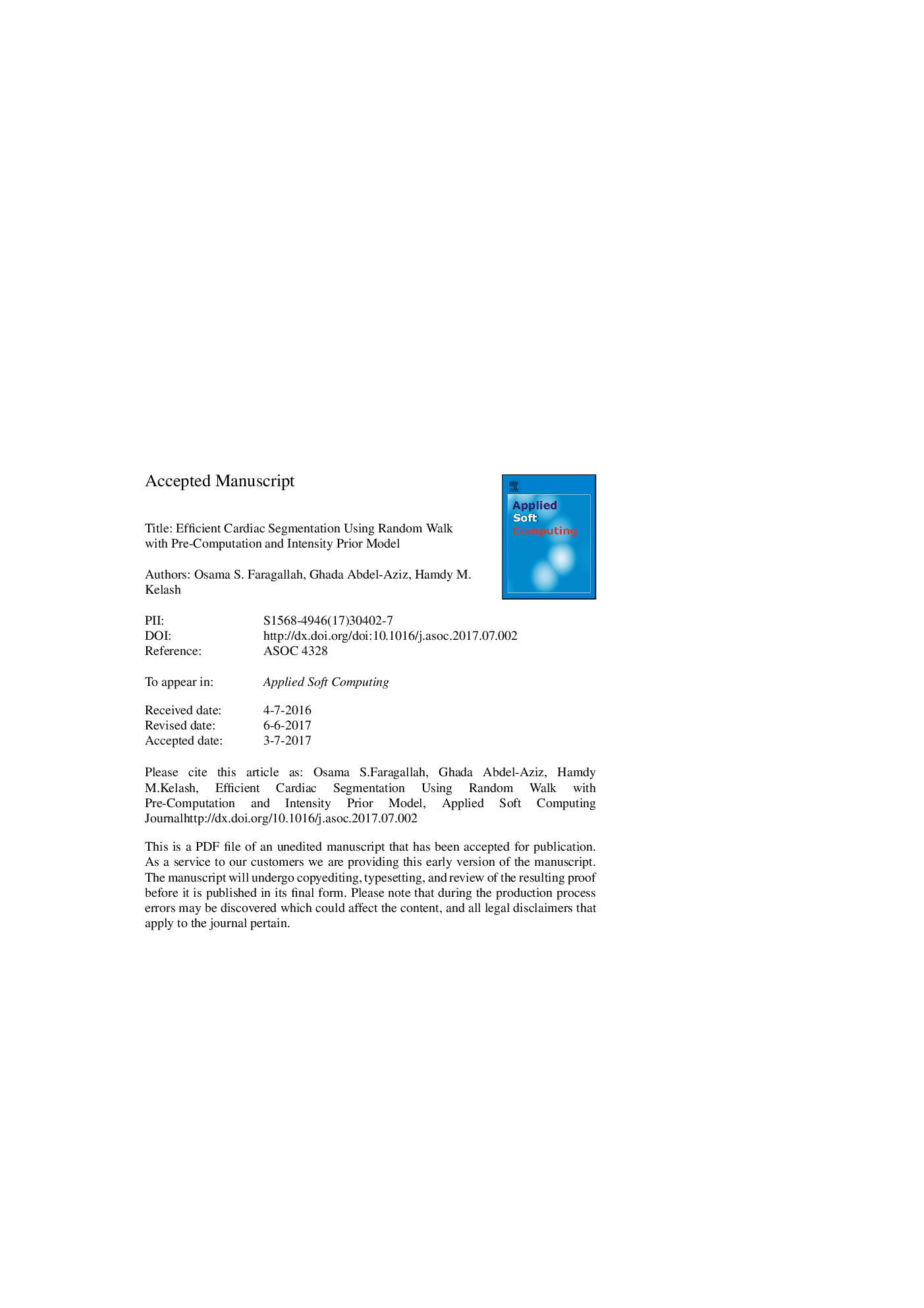| Article ID | Journal | Published Year | Pages | File Type |
|---|---|---|---|---|
| 4962928 | Applied Soft Computing | 2017 | 50 Pages |
Abstract
Cardiovascular diseases (CVDs) are considered the first cause of mortality and the major health concern according to recent statistics worldwide. Most CVDs are preventable by early prediction and detection to avoid the risk factors. Accurate early detection can strongly lower the death rate caused by CVDs. Image processing in field of biomedical analysis plays a major role in the detection of CVDs through the cardiac segmentation. The accurate and fast segmentation of left ventricle cavity and myocardium have a major effect on the quantification and diagnosis of the cardiac function. This research paper tackles the cardiac segmentation problem and presents a hybrid random walk segmentation technique for helping cardiologists and physicians to detect CVDs early. The proposed segmentation framework utilizes the toboggan segmentation algorithm, mixes the characteristics of the high speed random walk with pre-computation model and extended random walk with prior model to improve the segmentation. To assess the achievement of the suggested cardiac segmentation technique, a course of experiments is conducted using a 3D multi-slice short axis CMR database. The performance of the proposed technique is assessed and compared with that of other medical image segmentation techniques using various performance metrics such as similarity Dice coefficient, PSNR and Hausdorff distance. Compared to the other studied techniques, the results demonstrated that, the proposed technique is a powerful and accurate methodology in delineating the Left Ventricle (LV) endocardium and epicardium for segmenting the myocardium and cavity of LV. The LV parameters are then estimated using the obtained segments. The results also demonstrated that, the proposed technique improves the segmentation time significantly.
Keywords
Related Topics
Physical Sciences and Engineering
Computer Science
Computer Science Applications
Authors
Osama S. Faragallah, Ghada Abdel-Aziz, Hamdy M. Kelash,
